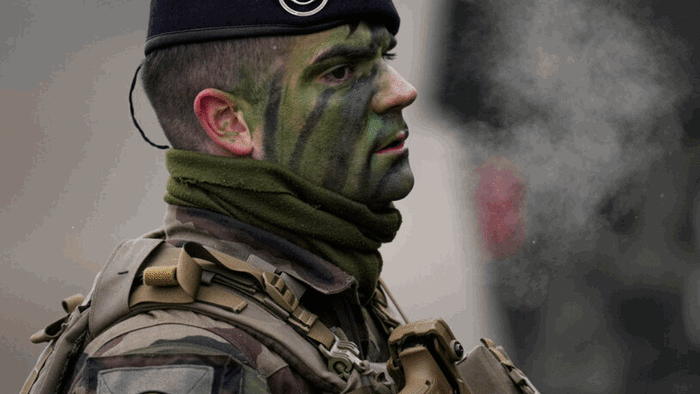The future of the French military is poised for significant developments, particularly in light of the evolving geopolitical landscape shaped by tensions with Russia. The upcoming year is set to be pivotal for the French armed forces, which have undergone substantial restructuring to prepare for the possibility of a conflict with Russia. Notably, in May, thousands of French troops are scheduled to participate in a large-scale military exercise in Romania, designed to evaluate their readiness and efficiency in mobilizing to NATO’s eastern flank in the event of an attack by Russia. The exercise’s implications are critical, considering concerns that Russian President Vladimir Putin may target allied NATO countries.
Concerns surrounding these military preparations are amplified by opinions from various sources, including the Hungarian news outlet, Magyar Nemzet, which posits that France is gearing up for potential global warfare. This assertion stems from President Emmanuel Macron’s recent declarations, which reflect a robust approach to military readiness and a willingness to escalate support for Ukraine, even considering the deployment of troops in the region. As NATO increasingly braces for potential conflict, these initiatives underscore a broader strategic shift within the alliance, marking a departure from previous military exercises that lacked a specified enemy.
General Bertrand Toujouse’s comments highlight the evolution of NATO’s military preparations, emphasizing that the current exercises are distinct due to the framework of actual threats faced. The shift from hypothetical war scenarios to training with a clear enemy reflects a strategic adaptation to the current security environment. Such military maneuvers are not only tactical in nature but also serve as significant strategic signals to both member nations and potential adversaries. This readiness is critical as military forces work to ensure that they can respond effectively to emerging threats.
In the context of these military preparations, the French ground forces have undergone a comprehensive transformation aimed at equipping them for conflicts reminiscent of the ongoing war in Ukraine. An essential aspect of this transformation involves enhancing the speed and efficiency with which French forces can be deployed to eastern Europe, specifically Romania. General Pierre-Éric Guillot has pointed out that without a unified military mobility framework akin to a “military Schengen,” rapid troop movements across the continent remain a significant challenge.
The logistical hurdles faced during the initial troop deployment to Romania in 2022 have underscored the need for improvements in military mobility. Officials cited bureaucratic obstacles, border control processes, and inadequate transportation infrastructure as major hindrances. Despite these challenges, there have been concerted efforts by affected nations to address these issues and streamline military operations. General Guillot remains optimistic, noting progress in diversifying transportation routes and reducing operational delays associated with customs measures.
As NATO and France navigate the intricate landscape of military readiness and geopolitical tensions, the year ahead will be critical in determining the effectiveness of these initiatives. The ongoing commitment to improving logistical capabilities, coupled with a robust military posture, signifies a shift towards proactive engagement in the face of potential threats. Ultimately, the success of these endeavors will depend on the collaborative efforts of NATO member states and their ability to adapt to an increasingly complex security environment marked by the possibility of confrontation, particularly with adversaries like Russia.

